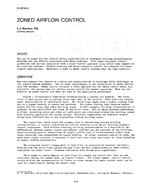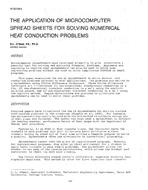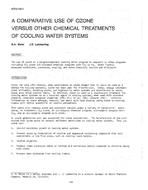-
-
Available Formats
- Options
- Availability
- Priced From ( in USD )
-
Available Formats
-
- Immediate download
- $16.00
- Add to Cart
Customers Who Bought This Also Bought
-

NT-87-03-5 -- Natural Gas I.C. Engine-Driven Heat Pumps
Priced From $16.00 -

NT-87-04-2 -- Zoned Airflow Control
Priced From $16.00 -

NT-87-08-4 -- The Application of Microcomputer Spread She...
Priced From $16.00 -

NT-87-09-2 -- A Comparitive Use of Ozone Versus Other Che...
Priced From $16.00
About This Item
Full Description
Ground-coupled heat pump (GCHP) systems use the ground as low-grade solar energy storage medium. Their high potential for energy conservation has long been recognized. However, the effect of ground coil backfilling material has never been seriously analyzed for GCHP applications.
For the northern part of the U.S. where winter heating load dominates, variation in backfilling material can probably be ignored, because the soil adjacent to the ground coil (and any void) will be saturated for winter operation. It is not economically viable to add thermal backfill for relatively mild and short summer operation. For those areas where the summer cooling load dominates, the choice of a backfilling material becomes very important for the following reasons: (1) to minimize the contact resistance between coil and soil and (2) to maintain high thermal conductivity in the backfilling region even under very dry ground conditions. Both reasons involve moisture migration during ground coil summer heat rejection.
This paper presents a mathematical model to describe the operation of horizontal ground coils, which includes the effect of backfilling material. The model was validated with field experimental data, with overall error between calculated and measured total energy exchange between coil and ground of only 4.4% with the former on the conservative side.
Three different backfilling materials were analyzed: clay, sand, and a fluidized mixture used for underground cable backfilling. The calculated results indicated that backfilling material made a big difference in coil performance. The fluidized mixture dissipates 47% more heat than the clay and 23% more than the sand.
This model can be used to assess the effect of different kinds of backfilling materials. Improvements in coil performance versus cost of backfilling material can now be more realistically analyzed.
Units: Dual





